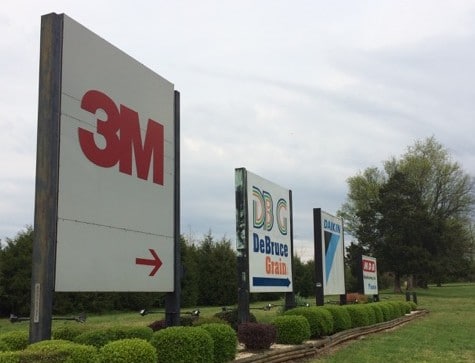Safe drinking water is an issue that’s been playing out from Parkersburg, West Virginia to Hoosick Falls, New York. It’s a question many courts are taking on. Among the most recent is in North Alabama, where residents and a water authority are suing 3M, maker of products from Scotchgard to Post-It Notes in connection with toxins in the water supply. The EPA is expected to release new guidelines on safe levels this spring. Meanwhile, the fight is on over who might foot the bill if a cleanup is in order.
Larry Watkins, 66, has lived near Decatur, all his life, as has most of his family.
He’s got 5 acres, about a mile from the Tennessee River. A few months ago, Watkins went to the doctor and found he has high levels of PFOA and PFOS in his blood. Those are byproducts of chemicals created by 3M to make non-stick surfaces. Watkins’s levels were three times what’s considered safe by the EPA. Watkins also has high cholesterol that doesn’t seem to respond to medication.
For decades, 3M manufactured these compounds and discharged waste into the river. Now, lawyers representing Watkins and thousands of other customers of the West Morgan-East Lawrence Water Authority say health issues ranging from cancer to high cholesterol are tied to elevated levels of these chemicals in the water. Carl Cole, an attorney in Decatur on the case, says all eyes are on the EPA.
“They have, for lack of a better term, guidelines that state how much of these chemicals can be exposed to over a short period of time,” Cole says. In case you were wondering, it’s 400 parts per trillion, but Cole says the issue for folks here is long-term.
“Because these people who have to drink this water every day don’t have short term exposure to this. They have long-term exposure to it,” he says. “And that’s why we’re seeing levels that are four and five times what is the guideline acceptable amount through the EPA.”
3M was the primary manufacturer of PFOS until it announced in 2000 it would voluntarily phase out production. In a statement, 3M said that in years of medical testing, its employees have shown “no adverse health effects” as a result of exposure to PFOS or PFOA. Several years ago, the company stopped making the chemicals at its Decatur facility. The problem, many say, is that these substances stay in the water supply.
Don Sims, general manager of the water authority here, says his operation treats 600 million gallons of water a year.
“We didn’t put the stuff in the water,” Sims says. “Whoever put it in the water should be required to clean it up. That’s it.”
Sims says levels of contaminants like the ones 3M discharged into the river years ago are still at times dangerously high. He’s worried that if the EPA issues new more restrictive guidelines, the water won’t be considered safe to drink. Not without a very costly cleanup.
“It would cost us somewhere between $20 million and $100 million to do a capital expenditure to clean that quart out of the water,” Sims says.
That quart Sims is talking about is about what these substances would amount to if you took all the water processed per year, and removed the bad parts.
In the meantime, residents like Larry Watkins will keep drinking the water. Watkins, who’s retired, wants to raise cattle. He’s not sure how the water situation would effect something like raising animals.
In the meantime, residents like Larry Watkins will keep drinking the water. Watkins, who’s retired, wants to raise cattle. He says plenty of people in the area raise livestock. The water, he says, is just one more thing to think about.

